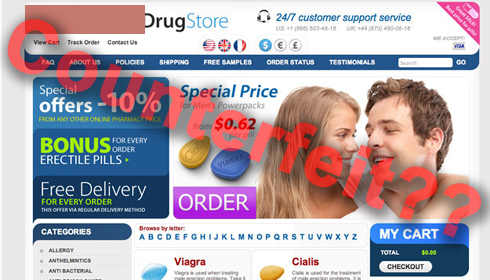
Counterfeiters Exploit Weight Loss Craze: Surge in Fake anti-obesity Drug Peddling in 2023
In a concerning trend, counterfeiters have seized upon the growing popularity of GLP-1 drugs, contributing to a significant rise in fake drug peddling through websites in 2023. According to a report by Fierce Pharma, cybersecurity company BrandShield revealed that more than 250 websites selling counterfeit GLP-1 medications were removed last year, marking a sharp increase from previous years.
GLP-1 drugs, known for their effectiveness in treating diabetes and aiding weight loss, have become a target for counterfeiters seeking to capitalise on the high demand for these medications. With companies like Eli Lilly and Novo Nordisk dominating the market, counterfeiters saw an opportunity to exploit the scarcity of legitimate drugs and the stringent requirements for their use.
The rise in counterfeit GLP-1 drugs has raised concerns among regulators, with reports of fake and substandard medications surfacing in various regions, including Australia, Europe, and the United States. BrandShield, working in collaboration with the Pharmaceutical Security Institute, has been actively involved in identifying and shutting down websites selling counterfeit drugs.
According to available data, the Pharmaceutical Scams Edition, the pharmaceutical industry is grappling with the staggering financial toll of data breaches and the pervasive threat of counterfeit drugs. According to recent studies, the average total cost of a data breach in the pharmaceutical sector amounts to a hefty $5.04 million. This eye-watering figure underscores the significant financial repercussions that breaches can inflict on companies within the industry.
But it's not just financial losses that pharmaceutical companies have to contend with. The widespread proliferation of counterfeit drugs poses a grave threat to public health and safety. Shockingly, counterfeit drugs worth a staggering $83 billion are sold annually, highlighting the magnitude of the problem. These illicit drugs not only undermine the integrity of pharmaceutical products but also endanger the lives of unsuspecting consumers.
The scope of the counterfeit drug epidemic extends beyond financial implications. Recent reports reveal that a concerning 10% of medicinal products circulating in low- and middle-income countries are either substandard or falsified. This alarming statistic underscores the urgent need for concerted efforts to combat the proliferation of counterfeit drugs and ensure the integrity of pharmaceutical supply chains worldwide.
Moreover, the pervasive nature of counterfeit drugs knows no bounds, infiltrating all therapeutic categories within the pharmaceutical industry. From life-saving medications to over-the-counter remedies, no sector is immune to the threat of falsified medicines. This alarming reality underscores the critical importance of robust regulatory measures and collaborative initiatives to safeguard the integrity of pharmaceutical products and protect public health.
2023 witnessed a significant escalation in BrandShield, whose cybersecurity teams use special software and tools to keep their networks and data safe inside their protective firewalls. But there are dangers lurking outside these walls that can still harm them. That's where brand-oriented digital risk protection comes in. It helps companies find and shield themselves from fraud and leaks that occur beyond their firewall, where they can't easily reach. This includes stopping web fraud, fake social media accounts pretending to be them, tricky phishing emails, cyber thieves trying to steal their online identity, and other sneaky tricks. With this protection, companies can detect these threats and stop them before they cause any harm. efforts, resulting in the removal of 1,655 websites selling counterfeit drugs, compared to 434 in 2022 and 850 in 2021. GLP-1 drugs accounted for a substantial portion of this surge, with the number of sites selling fake medications skyrocketing from 34 in 2022 to over 250 in 2023.
The prevalence of websites peddling fake GLP-1 drugs highlights the urgent need for action to combat this illicit trade. BrandShield reported that these sites constituted more than 90% of the total sites shut down for selling metabolic disease treatments, underscoring the gravity of the situation.
Metabolic disease emerged as the second most active area for online takedowns last year, following alimentary medicines such as stomach ulcer drugs. The surge in counterfeit GLP-1 drugs poses a significant challenge to pharmaceutical companies like Lilly, prompting increased vigilance and warnings to investors about the potential impact on business operations.
Lilly's financial filings for 2023 reflected a heightened awareness of the threat posed by counterfeit drugs, with the number of references to counterfeits increasing from two in 2022 to seven. The company emphasised the potential harm counterfeit or illegally compounded drugs could inflict on its business, signalling a proactive approach to addressing the issue.
As counterfeiters continue to exploit the demand for GLP-1 drugs, stakeholders across the pharmaceutical industry must intensify efforts to combat the proliferation of fake medications. Heightened vigilance, collaboration between industry and regulatory bodies, and robust enforcement measures are crucial in safeguarding public health and maintaining the integrity of the pharmaceutical supply chain.